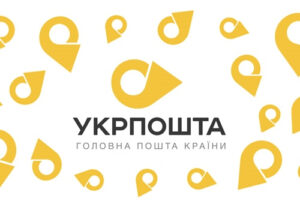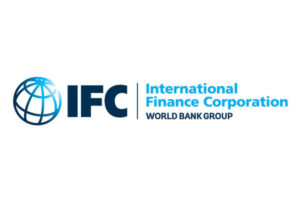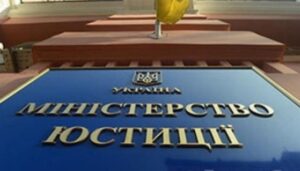
JSC “Ukrposhta” announced the beginning of strategic partnership with Chinese marketplace Temu.
“Ukrposhta and Temu announce the beginning of a strategic partnership,” wrote the CEO of Ukrposhta Igor Smilyansky on Facebook on Thursday.
According to him, Ukrposhta delivered 1.5 million parcels from Temu to Ukraine within the framework of the pilot project. About 80% of the shipments were delivered in three days or less.
Overall, Ukrposhta’s share in the volume of parcel deliveries from China is about 60%, Smilyansky said.
According to the CEO of Ukrposhta, a new automated processing center for international parcels will be opened during the first quarter, thanks to which the state-owned company will be able to deliver more than 90% of parcels in 1-2 days from the moment of crossing the border of Ukraine.
“I am sure that this will please many of our customers. Especially very soon all shipments will be able to track in the new mobile application,” – wrote Smilyansky.
Earlier, the Director of the Department of International Operations of JSC “Ukrposhta” Julia Pavlenko in an interview with the agency “Interfax-Ukraine” reported that “Ukrposhta” began to cooperate with the marketplace Temu.
Pavlenko announced the opening of an automated customs zone for the clearance of imported goods at the sorting center near Boryspil. The tentative start of its work was scheduled for January.
Putting this zone into operation will significantly speed up the clearance of import operations, the director of Ukrposhta’s international operations department said.

The International Finance Corporation (IFC) from the World Bank Group has signed documents on December 20, 2024 to provide Concern Galnaftogaz with a $53.87 million loan to finance the construction of a 147 MW wind power plant in Volyn region and technical support.
According to information on the IFC website, the total cost of the project is estimated at EUR261 mln (including VAT), the 16-year loan is granted to the established project companies Wind Power Plant Volyn LLC and Wind Power Plant Volyn 3 LLC, which are controlled by GNG Retail Limited and its subsidiary Concern Galnaftogaz (together – GNG Group).
It is indicated that the project involves mixed financing, including from the UK-FCDO and EC-UIF, as well as the Clean Technology Fund.
Earlier, on December 4, participation in the project was also approved by the European Bank for Reconstruction and Development (EBRD), which also signed documents on granting the above-mentioned LLCs a long-term loan of EUR60 million for the construction of a 147 MW wind power plant in Volyn region.
The WPP is expected to generate about 380 GWh (380 million kWh) of zero-carbon renewable electricity annually.
In February 2024, the Antimonopoly Committee of Ukraine (AMCU) authorized GNG Retail Limited (Cyprus) to buy more than 50% in the authorized capitals of Wind Power Group Volyn LLC and Wind Power Group Volyn 3 LLC. According to the data of public registers, GNG Retail Limited owns 89.5% in the two LLCs, while ZNVKIF Rimini JSC (in which Vitaliy Antonov owns 83.19%) – 10.5%.
OKKO CEO Vasyl Danilyak announced the start of work on the construction of a wind power plant in Volyn region in the fall of 2024. He explained the group’s plans to work in the RES sector by the need to diversify its business, as the fuel market is no longer expected to grow.
“Galnaftogaz” operates one of the largest networks of filling stations OKKO, which has more than 400 complexes with a network of catering establishments. The concern also includes other businesses.
Vitaly Antonov’s GNG Retail Limited owns 90.25% of Concern Galnaftogaz. Avalia Investments Limited (Cyprus) of Igor Mazepa, founder and head of Concorde Capital, became the owner of another 7.35% of shares in October 2024.

According to EastFruit analysts, as of the beginning of 2025 compared to the same period of 2024, prices for most types of fruits and vegetables in the Ukrainian market increased. However, there were also such positions, for which prices decreased. At the same time, the average rate of price growth for fruit and vegetable products did not differ significantly from the annual inflation rate, which indicates stabilization of the fruit and vegetable market.
Among the champions in terms of price growth rates in 2024 were cabbage, carrots and apples. Cabbage rose in price three times or more during the year due to a decrease in production volumes and low quality of products. Wholesale prices for carrots increased almost 2.6 times and reached UAH 26/kg ($0.61) as of the beginning of January 2025. Apple has increased in price by an average of 79% and is now sold in bulk for 25-28 UAH/kg, which is also equivalent to about 60 US cents. Premium quality apples are sold much more expensive.
“Apple prices have risen sharply in all European countries due to significant crop losses due to unfavorable climatic conditions. Another reason for the price increase is high prices for apple concentrate, supporting high prices for low quality apple as well. Accordingly, the fresh apple market lost the most affordable segment, which allowed the prices for medium and high quality apple to increase,” says Andriy Yarmak, FAO economist.
Similar to apple was the situation for pears, which rose in price by an average of 70% on the Ukrainian market over the year.
Mandarins are another item, for which there was a high increase in prices. The reasons were discussed in detail in this material. In Ukraine, the prices for these fruits increased by 58% over the year.
For other key positions the following price growth was observed: sweet pepper and grapes – 20%, potatoes – 30%. At the same time, prices for onions and greenhouse tomatoes did not change over the year, and greenhouse cucumbers fell in price by an average of 5% over the year. Wholesale prices for bananas decreased most significantly – by 8%.

This is 1.7 times more than in the same period in 2023
Ukrainian banks paid UAH 44.52 billion in income tax for 11 months of 2024, according to the National Bank of Ukraine. This is already 1.7 times more than in the same period in 2023. Of this amount, a record UAH 7.05 billion was paid in November 2024, after the tax rate was increased from 25% to 50%.
More than UAH 44.5 billion in income tax is due from 62 Ukrainian banks for the first half of 2024. This is already 1.7 times more than in the same period of 2023. Last year, the tax for banks was also increased in the last quarter.
Banks paid the largest amount of taxes for the year so far in November: UAH 7.05 billion. More than half of this amount – UAH 4.47 billion, or 63% – was paid by banks with foreign capital.
Overall, banks’ profit before taxes amounted to UAH 175.6 billion. This is a 12% increase compared to the same period in 2023.
11 banks suffered losses of UAH 388 million. Currently, 18% of Ukrainian banks are unprofitable.
https://opendatabot.ua/analytics/banks-2024-11


The work of the Unified State Register of Legal Entities, Physical Entrepreneurs and Public Formations (USR) will be resumed on Thursday, January 9 after a large-scale cyberattack by Russia, the Ministry of Justice of Ukraine reports.
“Tomorrow will resume electronic information interaction with government agencies – the State Tax Service, the State Statistics Service of Ukraine, the Pension Fund of Ukraine, the Ministry of Digital Transformation and other agencies that use the data of the UGR in their activities,” it said.
In particular, a number of online services with the help of the application “Diya” will work. Such functions as free search of information in the register, formation of extracts, obtaining the results of administrative services by access code, access of state bodies to the information of the register through access identifiers will resume work on the UGR portal.
“Our team continues to work on the restoration of other registers. We know how important to you the convenience of access to public services and their smooth operation. Therefore, together with the Cyber Police, the Cyber Department of the SBU, the State Spetsvyaz and specialists of the National Information Systems, we are doing everything possible not only to resume the work of the registers, but also to strengthen their protection. Your trust is our responsibility and an incentive to work even harder,” the ministry emphasized.
As reported, the website of the Ministry of Justice of Ukraine restored work on Wednesday.
On December 20, Stefanyshyna said that all data in the registers will be restored, but it will take some time, then she estimated it at about two weeks.
In comments on the Facebook page of the Ministry of Justice, readers are asking for the real estate registry and executive services to resume work as soon as possible.

Prices for carrots in Ukraine have been rising for several weeks, analysts of the EastFruit project report. Experts explain the rise in prices for this product by the fact that many local producers have exhausted stocks of quality root crops, whose harvest in 2024 was significantly affected by unfavorable weather conditions.
At the moment, the price range for carrots is already voiced in the range of 25-32 UAH/kg ($0.59-0.76/kg), depending on the quality and volume of offered batches of vegetables, which is on average 10% more expensive than a week earlier.
Market participants explain another price increase in this segment by stable demand for quality carrots. At the same time, the supply of these root crops on the Ukrainian market has noticeably decreased this week. Many producers have already announced the end of the season of realization of available stocks of products. Some farms offer for sale residual lots or refrain from selling at all, hoping to realize vegetables closer to spring at higher prices.
It should be added that today the price of carrots in Ukraine is already on average 2.3 times higher than in early January 2024. Industry experts explain this price level by the reduction in the harvest of this product in the current season due to weather anomalies in the summer.
You can get more detailed information about the development of the market of carrots and other horticultural products in Ukraine by subscribing to the operative analytical weekly – EastFruit Ukraine Weekly Pro. Detailed product information is available at here.